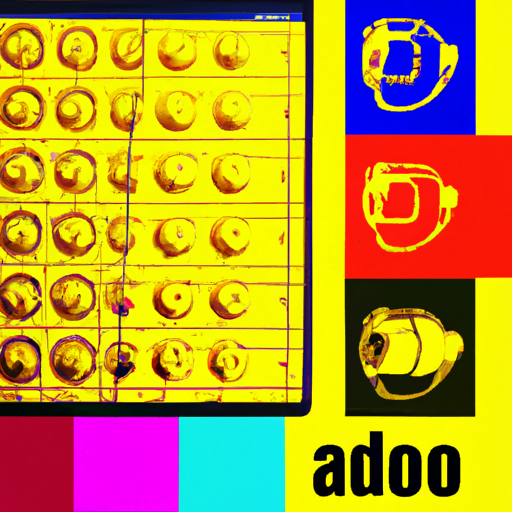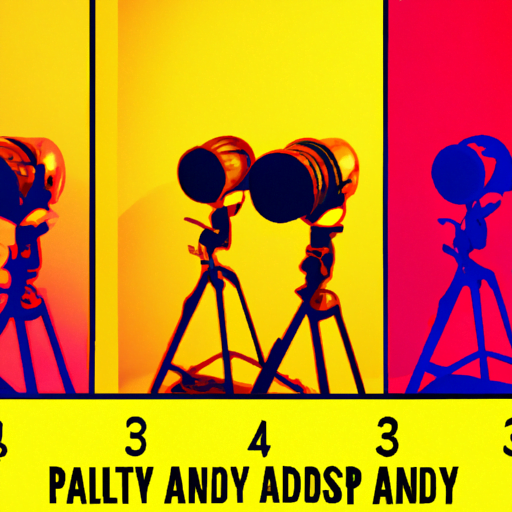
-
Table of Contents
- Designing Podcast and Audio Production Interfaces
- The Importance of User-Centered Design
- Key Considerations for Podcast and Audio Production Interfaces
- 1. Workflow Efficiency
- 2. Clear and Intuitive Controls
- 3. Customizability
- 4. Visual Feedback
- 5. Accessibility
- Case Study: The Zencastr Interface
- 1. Simple and Minimalistic Design
- 2. Easy Recording and Editing
- 3. High-Quality Audio Processing
- 4. Collaborative Features
- Best Practices for Designing Podcast and Audio Production Interfaces
- Summary
Designing Podcast and Audio Production Interfaces

Podcasts have become an increasingly popular form of media consumption, with millions of people tuning in to their favorite shows every day. As the demand for podcasts continues to grow, so does the need for well-designed podcast and audio production interfaces. These interfaces play a crucial role in ensuring a seamless and efficient production process, allowing podcasters to focus on creating high-quality content. In this article, we will explore the key considerations and best practices for designing podcast and audio production interfaces.
The Importance of User-Centered Design
When designing podcast and audio production interfaces, it is essential to adopt a user-centered design approach. This means putting the needs and preferences of the users at the forefront of the design process. By understanding the goals and workflows of podcasters, designers can create interfaces that are intuitive, efficient, and enjoyable to use.
One way to achieve user-centered design is through extensive user research. Conducting interviews, surveys, and usability tests with podcasters can provide valuable insights into their pain points and preferences. This research can help identify common patterns and inform the design decisions.
Key Considerations for Podcast and Audio Production Interfaces
When designing podcast and audio production interfaces, several key considerations should be taken into account. Let’s explore some of these considerations:
1. Workflow Efficiency
Podcast production involves various tasks, such as recording, editing, mixing, and publishing. Designers should aim to streamline these workflows by providing easy access to essential tools and features. For example, a well-designed interface should allow podcasters to quickly switch between recording and editing modes, adjust audio levels, and apply effects without unnecessary clicks or complex menus.
2. Clear and Intuitive Controls
Clear and intuitive controls are crucial for podcasters to navigate the interface effortlessly. Designers should use familiar icons and labels that align with industry standards. Additionally, providing tooltips or contextual help can assist users in understanding the purpose and functionality of each control.
3. Customizability
Every podcaster has unique preferences and workflows. Offering customization options allows users to tailor the interface to their specific needs. For example, allowing users to rearrange the layout, assign shortcuts to frequently used functions, or create personalized presets can significantly enhance the user experience.
4. Visual Feedback
Providing visual feedback is essential for podcasters to understand the impact of their actions. For example, when adjusting audio levels, a visual meter can help users gauge the intensity of the sound. Similarly, visual cues can indicate the progress of rendering or exporting tasks, ensuring that podcasters are aware of the system’s status.
5. Accessibility
Designing interfaces that are accessible to all users, including those with disabilities, is crucial. Considerations such as color contrast, keyboard navigation, and screen reader compatibility should be taken into account. Adhering to accessibility guidelines ensures that podcasters with visual impairments or mobility limitations can fully engage with the interface.
Case Study: The Zencastr Interface
Zencastr, a popular podcasting platform, offers an excellent example of a well-designed podcast and audio production interface. Let’s take a closer look at some of its key features:
1. Simple and Minimalistic Design
Zencastr’s interface follows a simple and minimalistic design approach. The clean layout and uncluttered interface allow podcasters to focus on their content without distractions. The use of whitespace and clear typography enhances readability and reduces cognitive load.
2. Easy Recording and Editing
Zencastr provides a straightforward and intuitive recording and editing process. With just a few clicks, podcasters can start recording their audio, invite guests, and monitor the audio levels. The editing interface allows users to trim, split, and rearrange audio clips effortlessly.
3. High-Quality Audio Processing
Zencastr offers built-in audio processing features, such as noise reduction and automatic leveling. These features help podcasters improve the audio quality without the need for external tools or plugins. The interface provides clear controls for adjusting these settings, allowing users to fine-tune the audio processing according to their preferences.
4. Collaborative Features
Zencastr’s interface includes collaborative features that enable podcasters to work together seamlessly. The platform allows multiple participants to record their audio tracks independently, ensuring high-quality audio even in remote recording scenarios. The interface provides clear indicators for each participant, making it easy to identify and manage individual tracks.
Best Practices for Designing Podcast and Audio Production Interfaces
Based on the key considerations and the Zencastr case study, here are some best practices for designing podcast and audio production interfaces:
- Conduct extensive user research to understand the needs and preferences of podcasters.
- Streamline workflows by providing easy access to essential tools and features.
- Use clear and intuitive controls that align with industry standards.
- Offer customization options to accommodate different user preferences and workflows.
- Provide visual feedback to help users understand the impact of their actions.
- Ensure accessibility by adhering to accessibility guidelines and standards.
Summary
Designing podcast and audio production interfaces requires a user-centered approach that considers the unique needs and preferences of podcasters. By streamlining workflows, providing clear controls, offering customization options, and ensuring accessibility, designers can create interfaces that enhance the podcasting experience. The Zencastr interface serves as an excellent example of a well-designed podcasting platform, showcasing the importance of simplicity, ease of use, and collaborative features. By following best practices and incorporating user feedback, designers can contribute to the growth and success of the podcasting industry.
